Another article from my “Go Visit Hamburg”-series, but this time it has an aftertaste. The lightheartedness of the summer when these pictures had been taken is gone. In the events unfolding in the Baltic Sea right now with two gas pipelines deliberately severed, underwater warfare suddenly becomes a cruel reality. “No politics on board!”, this is one of the standing orders when I am skipper and I will try to hold back with my political views here as much as I can. But as I said: An aftertaste remains.
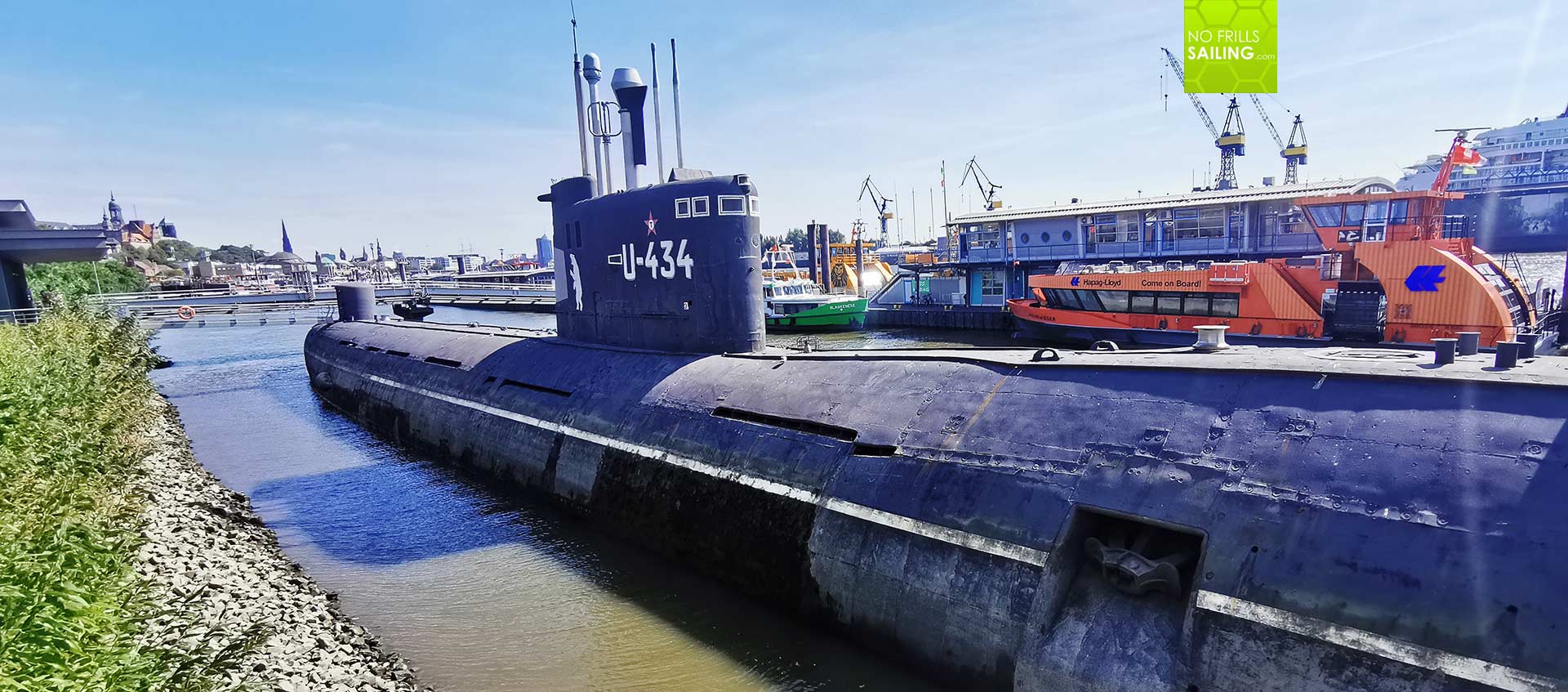
I visited U-434 in Hamburg a few weeks ago. A wonderful, warm summer´s day. The Russian submarine is one of the major maritime highlights to visit here and as I know than more than 50 per cent of you, dearest readers, are Americans, I want to urge you to come and visit Hamburg, the Northern Part of my country: This sub is definitely one location you should spare one or two hours for of your visiting time here.
A sad topicality
“U-434” is a made up name. We Germans are used to submarines called “U-something” and I guess the owners of this Diesel-electric submarine found it fitting to change her real name, which used to be B-515. This is a Cold War veteran, one of the many, many variants and trials of the Soviet Navy to counter American technology. At a length of 92 meters and a width of 8.6 meters this is one of the bigger Diesel-subs ever built. She was projected to be an assassin. Her task and only reason to come into being: To ambush seaborn traffic at natural chokepoints.
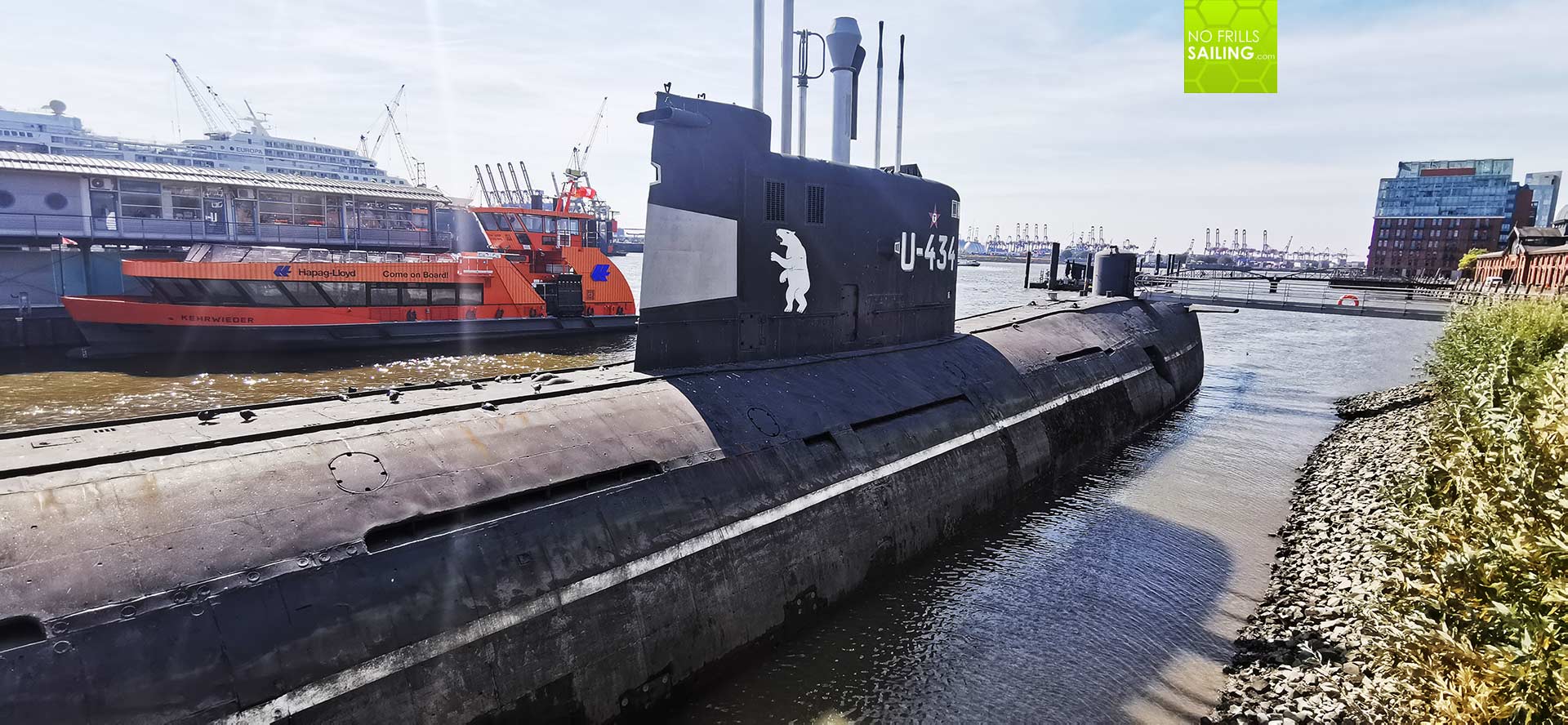
In this, a sad analogy to current events unfolding in Europe (and elsewhere in the world) comes into mind: The brilliance of human capabilities and the failure of human morality to triumph over our deeply rooted carnivorous instincts. Make no mistake: This is a killing machine. Intended, built and manned to silently wait for prey, which would have been ships of course, to fire, hit and sink. Young soldiers trained to master this machine. Trained to let loose the weapons. Killing other young soldiers on other ships.
Sniper of the Seas
It s ridiculous, and I see this contradiction within myself too all too clearly, that a monster like this where there is not a single centimeter of peace, making me develop such a fascination. This sniper of the seas has nothing beautiful, nothing peaceful and nothing useful to it, yet, I stand there in awe, my heart beating faster, eyes wide open in fascination and excitement. Just the same as my kids, who cheer as we enter the submarine museum.
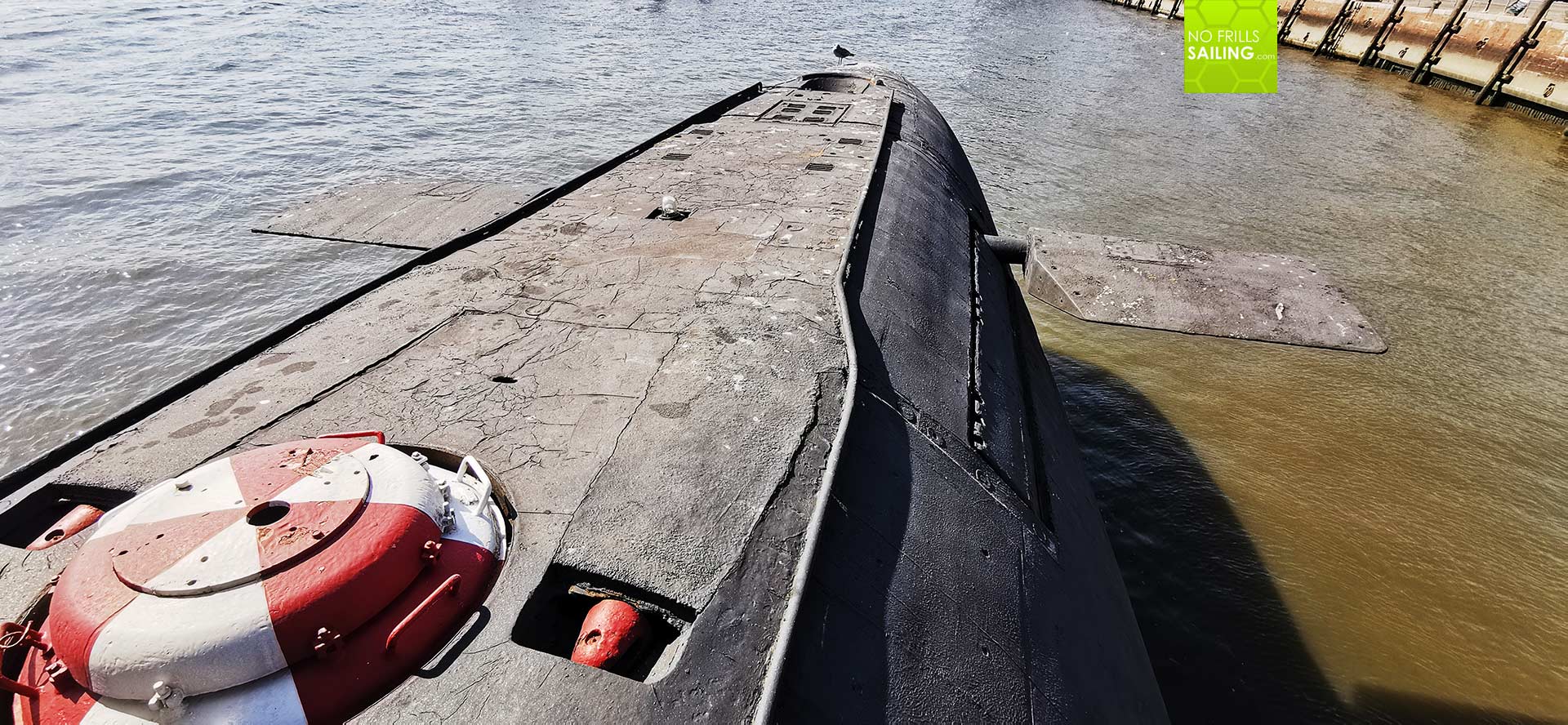
B-515 was built as one of 18 units in the Soviet Union in the year 1982. She clearly has the hull derived from late German Type XXI “Elektro-Boot” but bigger, more efficient. The huge bulge in the bow hosts a then-modern Sonar-system. Six tubes for up to 24 torpedoes give this sniper its weapons of choice. The NATO-dubbed Tango-class, Soviet designation Projekt 641B “Som” or “Catfish” received his nickname “Rezinka”/”rubber-eraser” from her thick anechoic rubber coating which made her silent, stealthy. A perfect sniper.
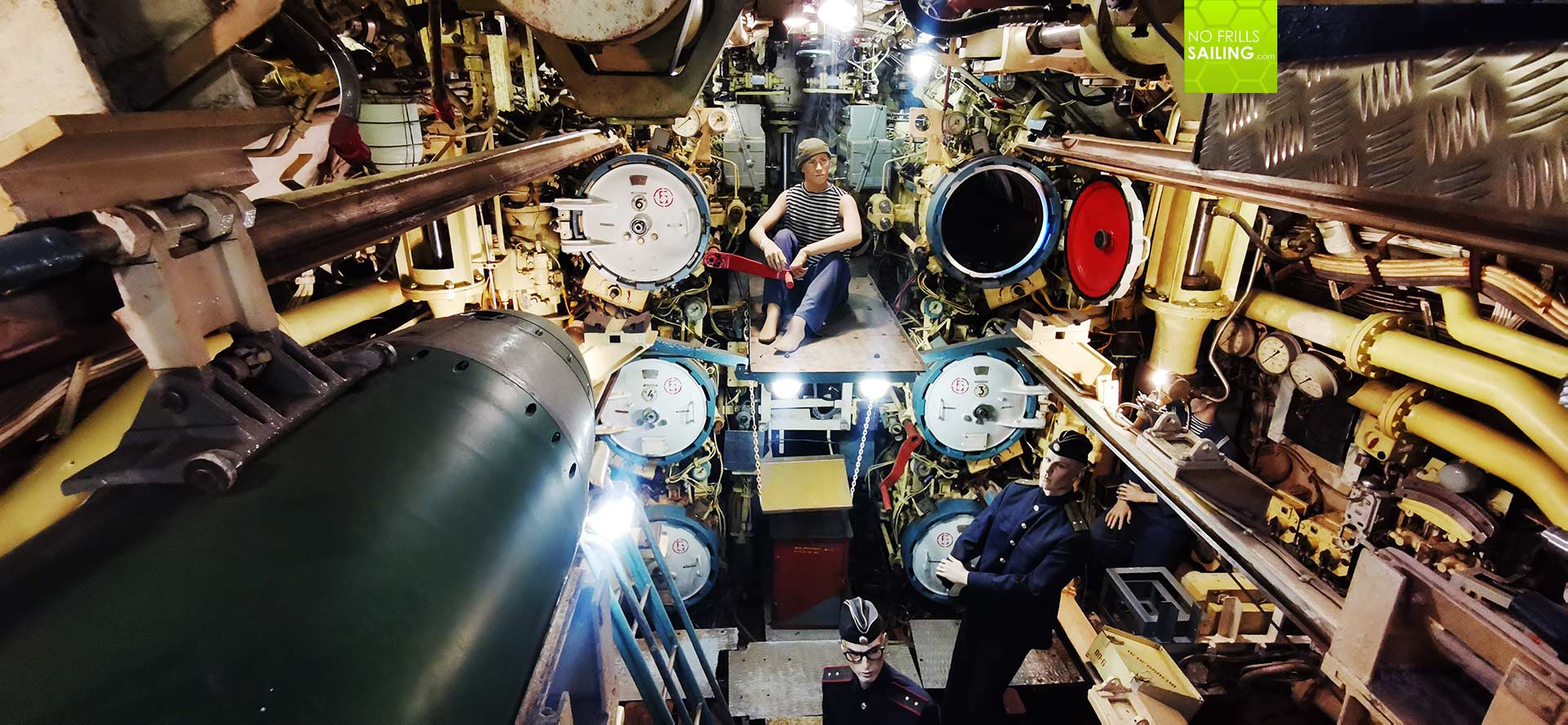
We dive down, the tour starts in the bow. The whole pressure hull is one single large room in the front. Well, not a room, a hull, a three-story cathedral of war. The tubes partially opened, we walk down the central walkway, torpedoes hang ready to be loaded next to us. Seven meters long, carrying up to 200 kilograms of highly explosive and destructive agent. For most civilian ships like freighters or tankers, one of these would have been enough to be sunk. This boat carries 24 of these.
Imagine War
Imagine being part of the crew inside here. No windows, apparently, no knowledge of what is outside the thick two hulls. Just sounds and noise of the water, the pressure exerted on the hull. Cracking, squeaking. Manning your station, your part would have been to monitor gauges and displays, push some buttons or turn levers. All that reaches your ears are short, specific orders. As an ordinary sailor out of the 61 men making the crew, just a handful of officers back in the control room would have had the privilege to get a full picture. For the rest, just bare sounds. And for most, I am sure, naked fear.
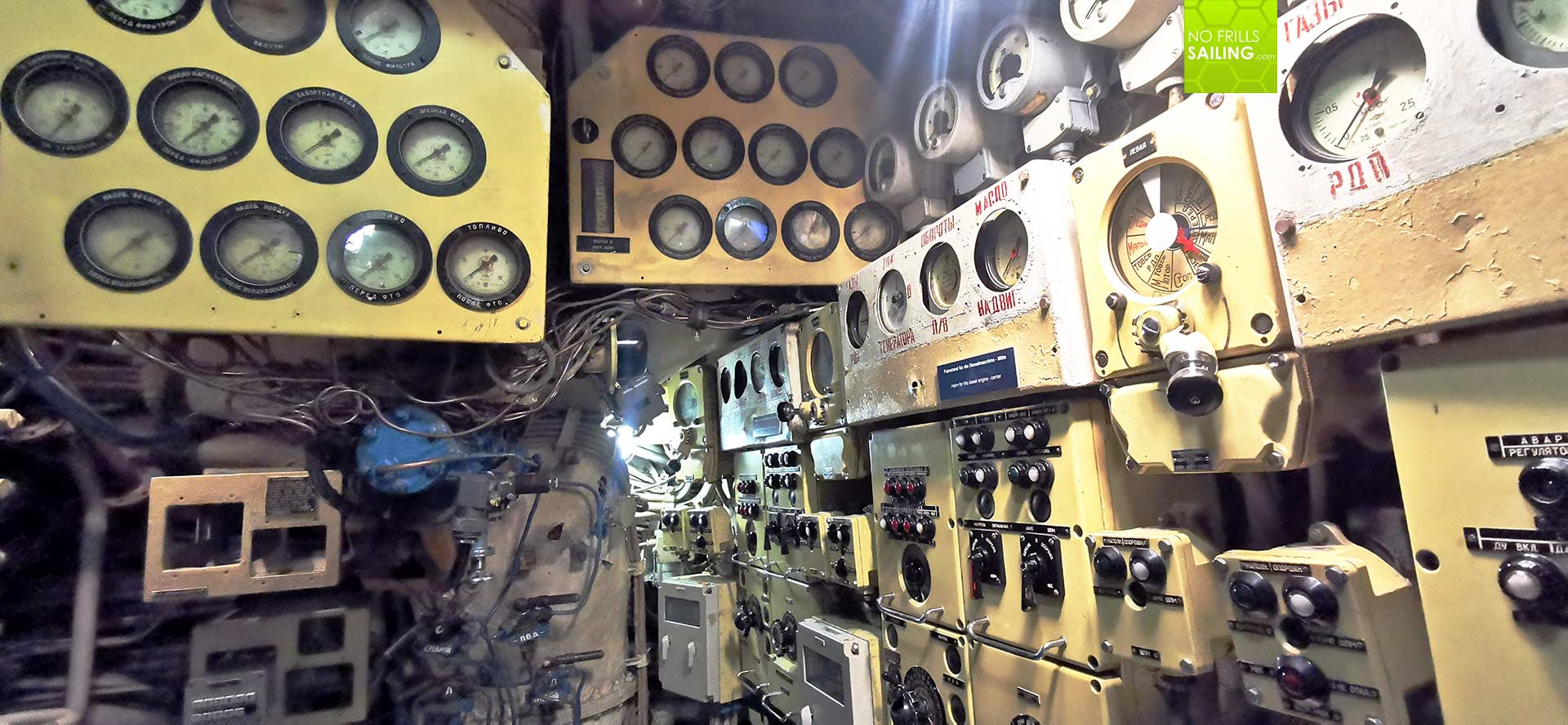
We walk back through the upper of the three levels of the submarine. Down beneath us are two decks filled with huge banks of acid batteries. This submarine is powered by three huge Diesel engines which load up those batteries. The Tango sub was capable of staying submerged for up to one full week before she had to surface or put up the snorkel to gather new fresh oxygen for crew and the Diesels to run and reload.
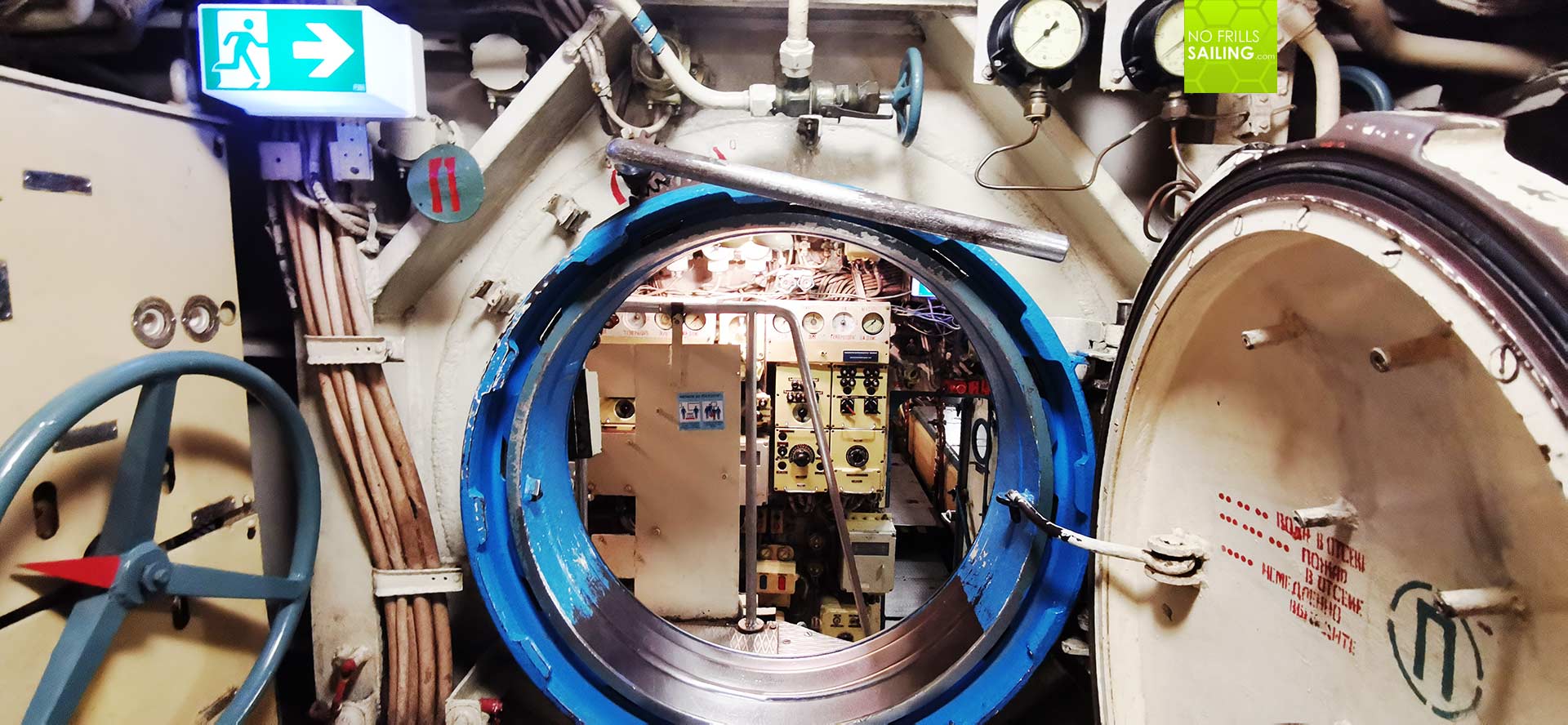
We crawls through the massive watertight bulkheads, cramp ourselves through the round hatches. It´s a great fun for my kids. My back hurts after the third hatch. I am a fit guy, but this is clearly something for younger people. Again, here we are: Soviet sailors, barely 20 years old, serving their time on boats like these. Their American counterparts, just having left High School. Preying on each other, hunting through the cold. Fascination and fear. The ambiguity of human existence.
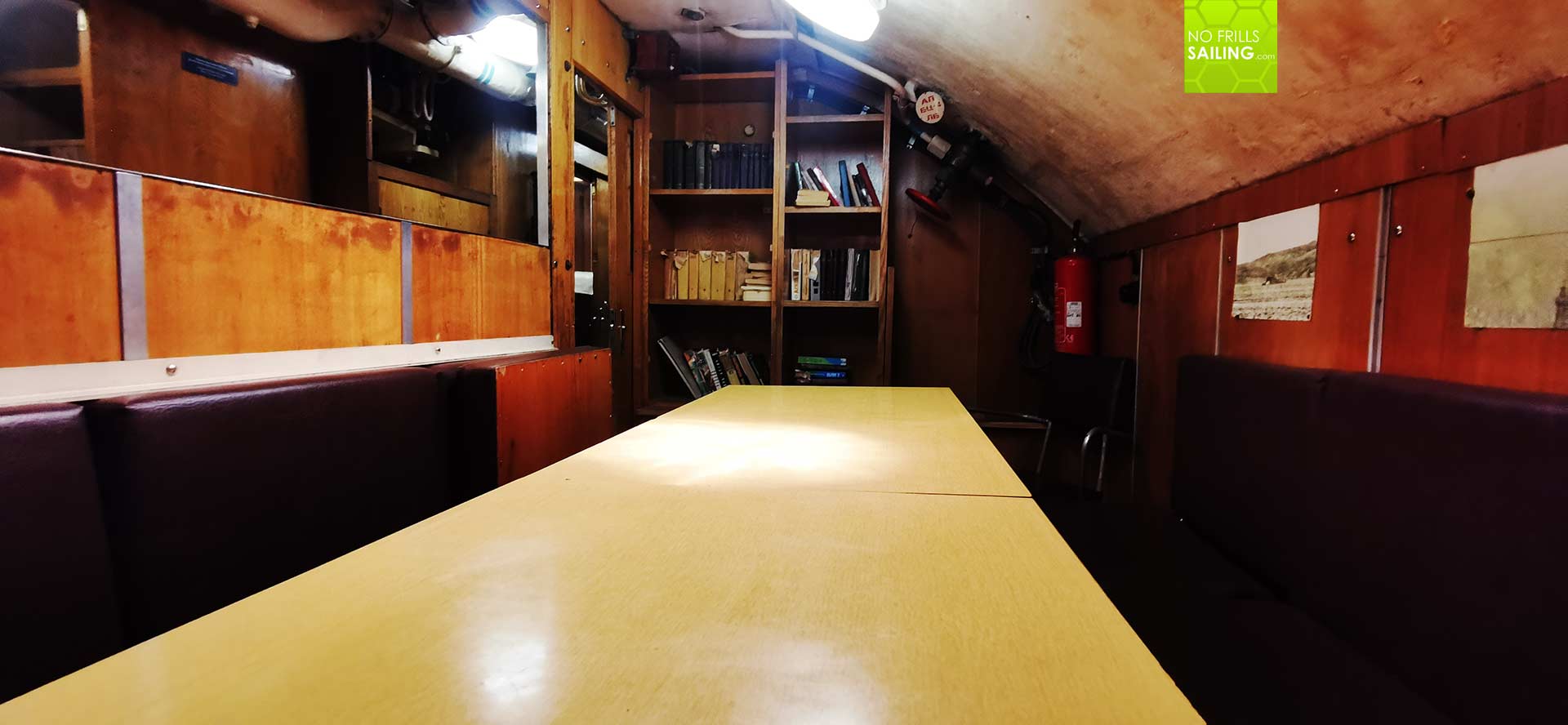
I am instantly reminded of “Hunt for Red October” as I take a seat in the Officer´s mess. I can hear distant voices of Captain Ramius aka Sean Connery, swearing in his crew to defect. But I also try to envision a regular crew, the real men who served on this vessel, sitting down here, taking in their meals three times a day. What would they have been talking about? Where would the boat have been operating then? This is not a Hollywood movie, this is a real weapon, having served up until the late Nineties manned by real soldiers.
Ghosts of the Past
You can hear those faint voices almost everywhere. The submarine-tour lets you peek into the sleeping chambers of the Officers, the ordinary sailors and the Captain. You get to see a sickbay and isolation-station and the ship´s galley.
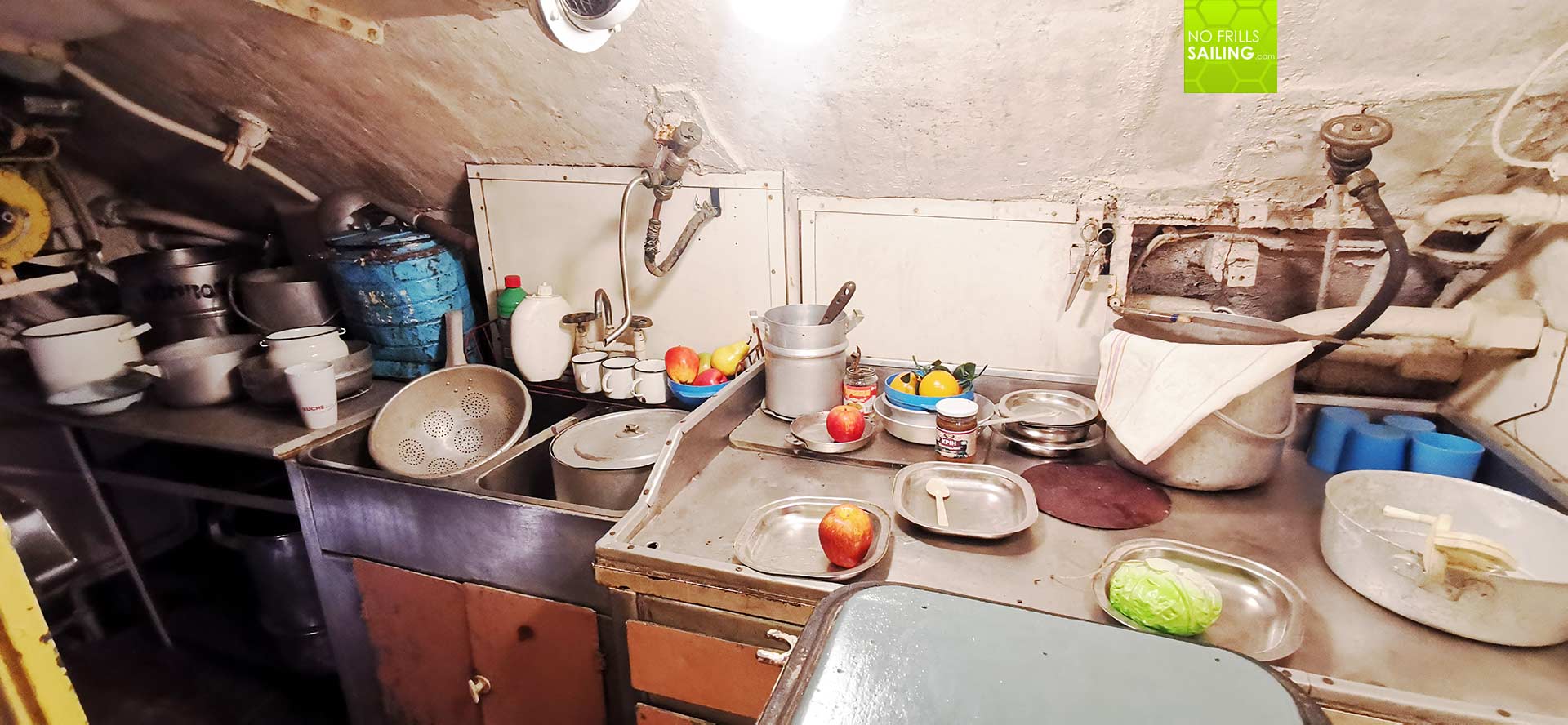
Here and there rubber crewmen dressed like Soviet navy soldiers are placed, the galley is propped up with plastic food scattered around. The submarine is generally in a bad shape. I don´t think that an active vessel of the Navy would have been looking like this during duty. I assume that B-515 had been taken out of active service for years and was mothballed before being sold as a museum to Hamburg, nevertheless, the awful state of the interior adds somehow to the somber feeling.
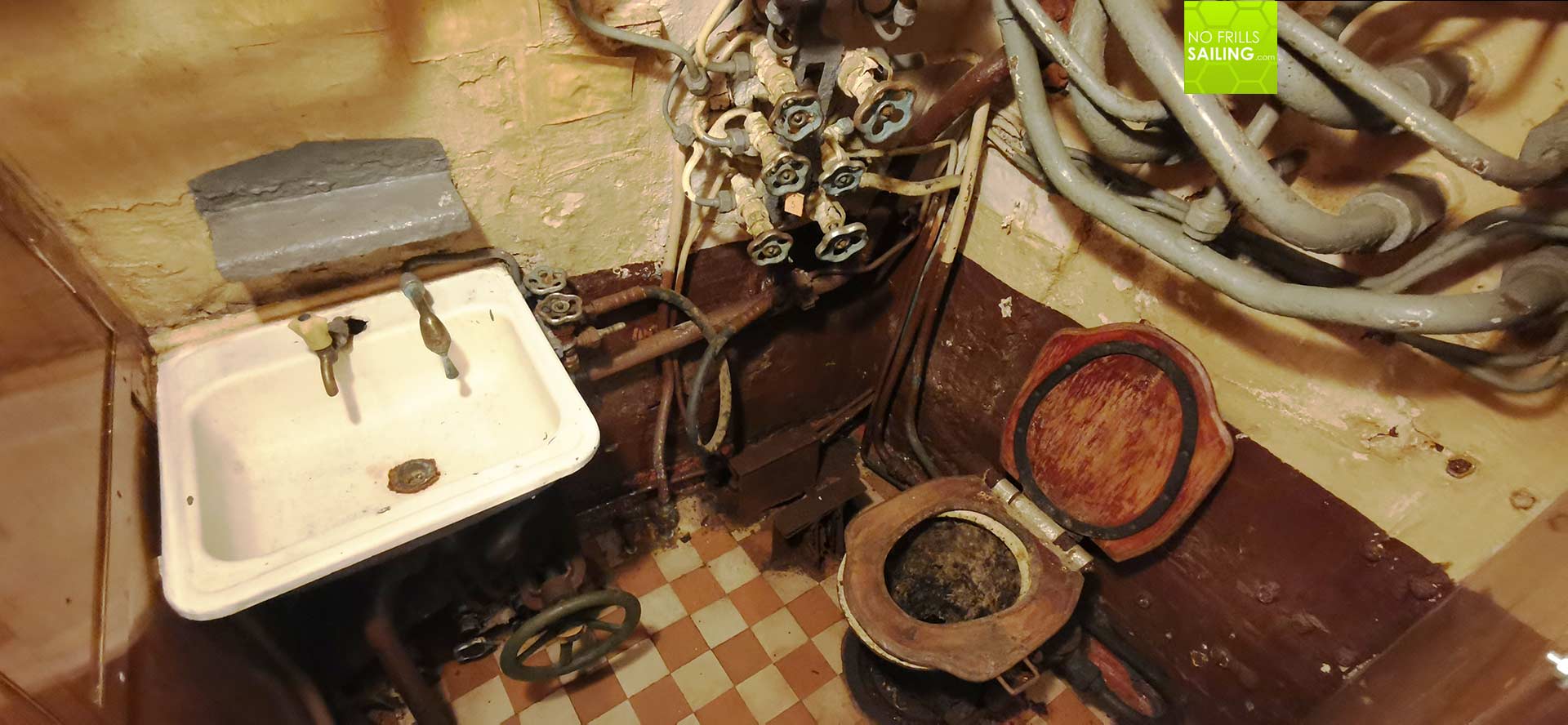
These poor young guys, I think to myself whereas other tourists are joking around commenting on the bad state of the bathroom. Poor bastards, I am thinking: Drafted to serve for one or more years, put aboard this submarine and sailing through the darkness. As ordinary sailors never knowing for sure what their task had been or where they were going. At least, this class of boats wasn´t that bad at all: The rafting technology and rubber coating made it hard to detect. At least they were not sailing around sitting in a fishbowl.
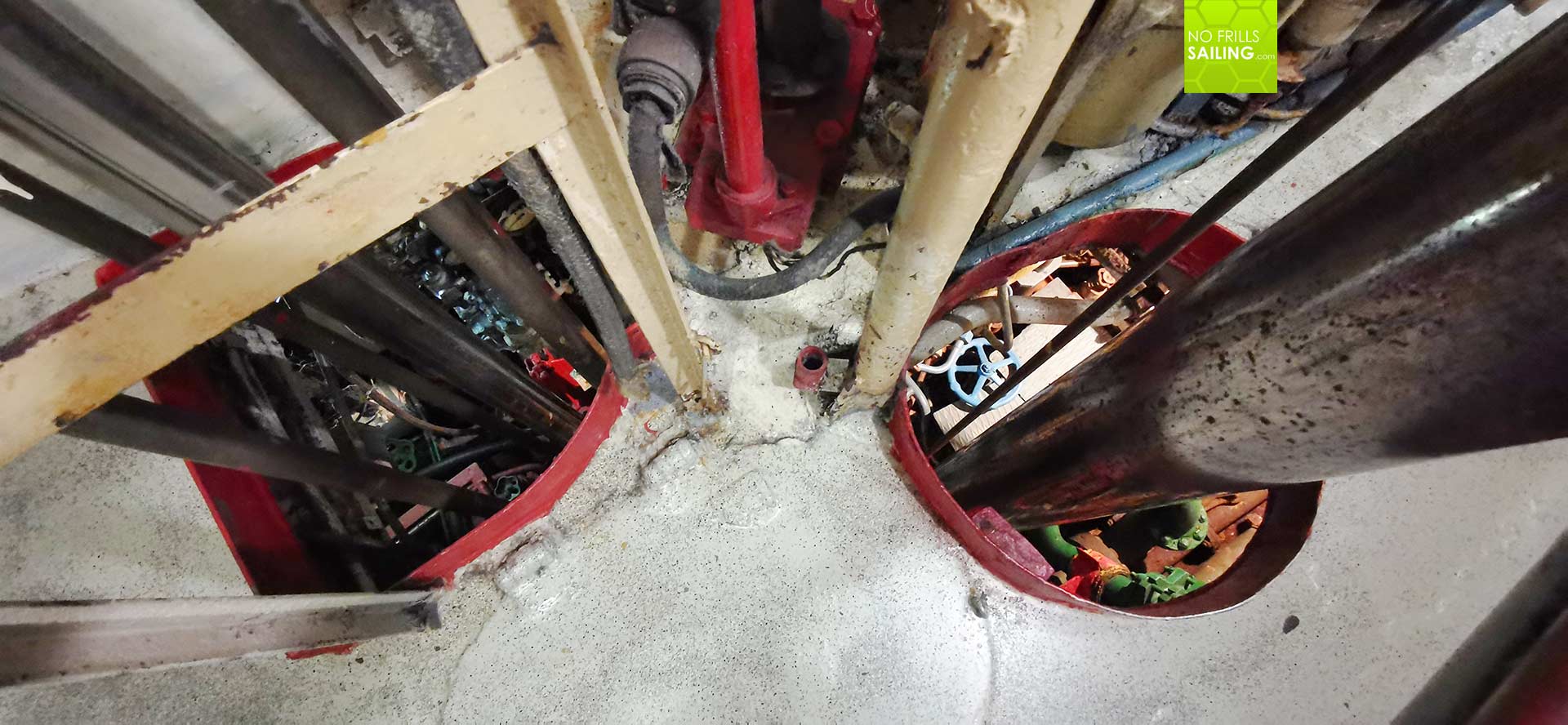
This submarine amazes, excites and exhilarates: A huge machine consisting of millions of small parts. Machinery and mechanics, hydraulics, electrics and electronics. On many of these little signs have been put by the museum to explain what they were meant to operate. Behind every corner, in each nook, below your feet and above your head: Levers, gauges, buttons, indication lights. Imagine alarm, imagine an attack: Everything is lighted up, under pressure. Imagine a blow. Water coming in …
A Hamburgian site
We leave B-515 after roughly half an hour. This is the time that it takes minimum to walk through the submarine from bow to stern. The three huge Diesel-engines at last have been a true highlight, connected to the three large electric engines. I still can´t imagine that these huge powerhouses can run and make a hell of a noise yet this 5 centimeters of rubber coat shut off the sound so effectively. We resurface to the warm and sunny sky of Hamburg. So peacefully, yet the aftertaste isn´t gone.
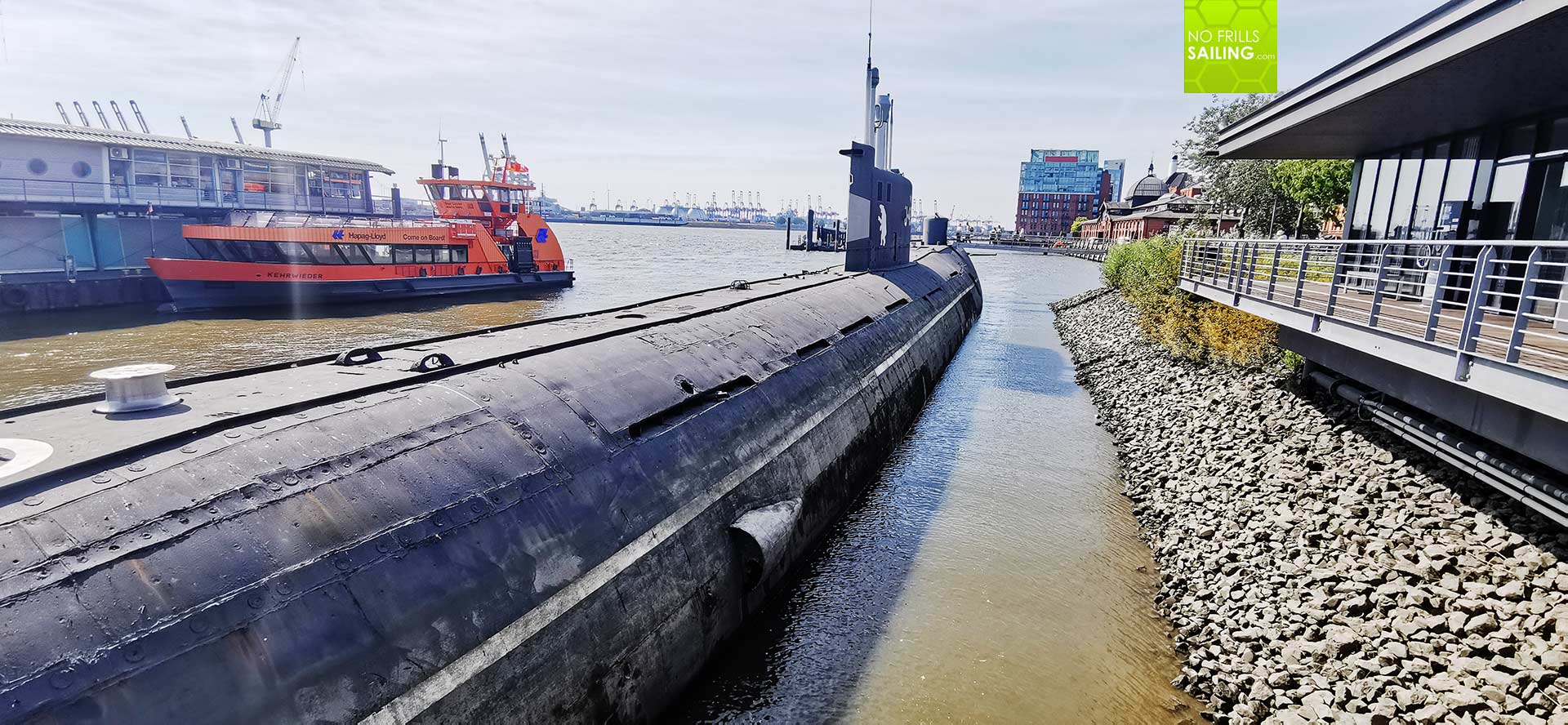
In this, especially in times like these when apparently people think it is a good idea to blow up gas-pipelines, to have submarines diving down into the dark again to prey on other ships, to shoot to kill, it is a kind of sobering experience to realize that we as human race haven´t still reached the moral and intellectual level to overcome our raw instincts to kill each other. This is so sad. I take my kids, we walk away and talk about their impressions. And I try, among their fascination, to teach them that this dinosaur of the Cold War is good – and is only good – for being what it is now: Immobilized, demilitarized. A museum of our stupidity.
You like submarines? Here´s more:
Talking to “Das Boot” actor Martin May aboard a real Type VII-C Uboat
Docking a submarine like a pro
Uboat-bunkers and carbon racing yachts: Lorient´s “La Base”
